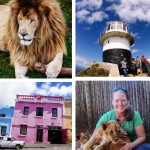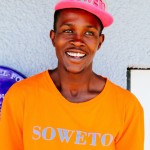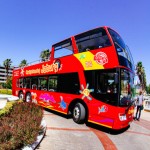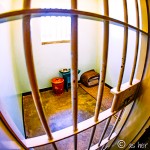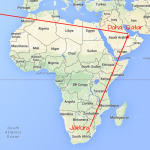A major landmark in Johannesburg is the Apartheid Museum, which opened in 2001 and “is acknowledged as the pre-eminent museum in the world dealing with 20th century South Africa, at the heart of which is the apartheid story” (quote via the museum’s website).
I stop here in the middle of of my day-long hop-on/hop-off city bus tour of Johannesburg. This museum visit would be better scheduled for a free afternoon or morning, rather than trying to squeeze it in during a city tour. There is so much to see, read, and take in throughout the exhibits — I spend maybe 2.5 hours here and see only half of it in depth before skimming the rest on my way out to catch the bus. So I have a decent grasp on how apartheid began and grew, but it’s sort of a cliff-hanger as to how it resolves in the end of the 20th century — I have to go back the next time I’m in Joburg to delve into the rest. Or, you know… Wikipedia it. Honestly, I would have preferred a streamlined exhibit to get a better overall understanding of apartheid rather than go into tremendous detail on every beat of its history. But the museum is too complete, too thorough to do it justice in less than four hours.
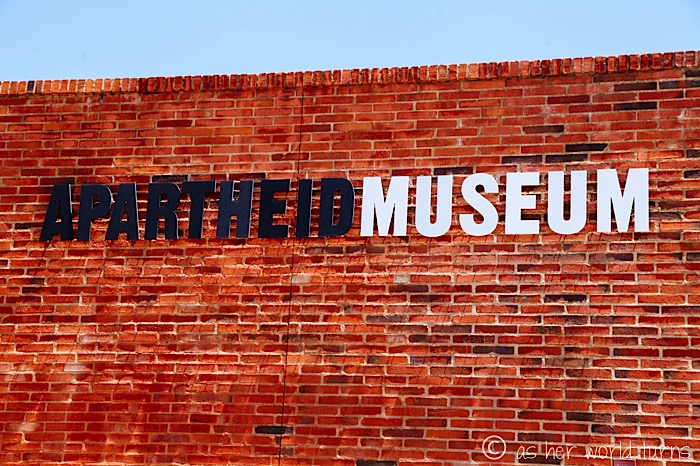


The Apartheid Museum’s impressive exterior is lined by seven pillars, each one representing a core value of the South African constitution: equality, responsibility, democracy, diversity, respect, reconciliation, and freedom.
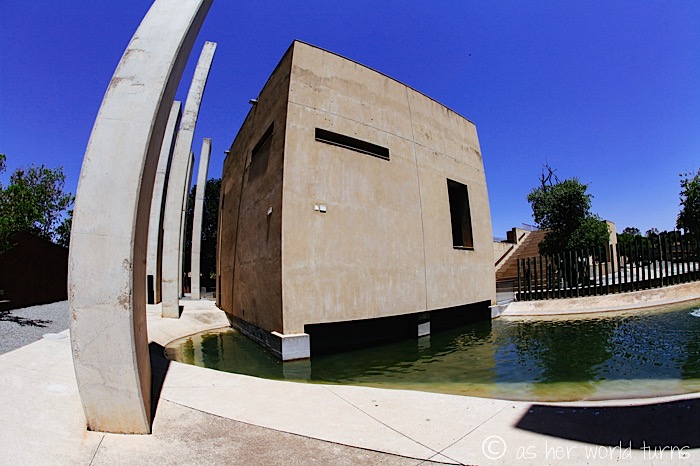
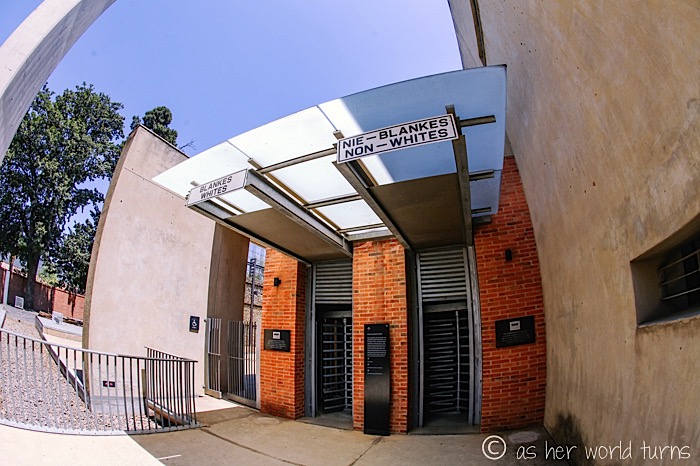
The entrance is designed to impact visitors from the moment they set foot inside the museum — every ticket is randomly classified as either ‘white’ or ‘non-white’ and guests enter through the appropriate door. The initial hallway corresponds to the classification on your ticket, but you can loop back to see the other one. What a great way to trigger a sense of what segregation was like during apartheid’s heyday, even in the most basic way.
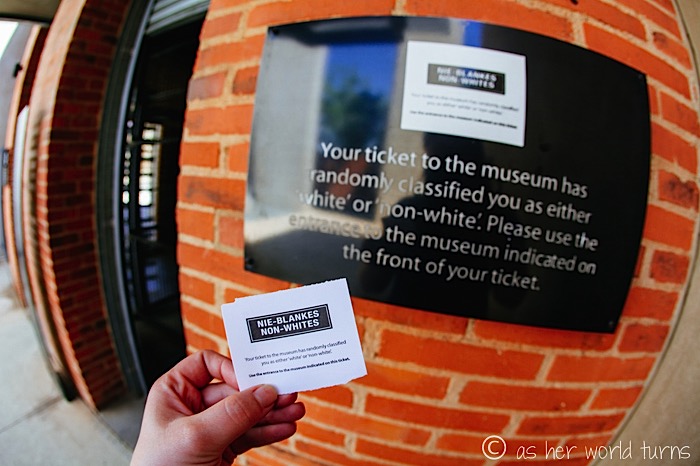

Next the path winds outside around the back of the museum, along a wall filled with rocks (they are technically called gabion baskets, a new word I just learned thanks to the internet) — perhaps a nod to the legacy of mining in this area.
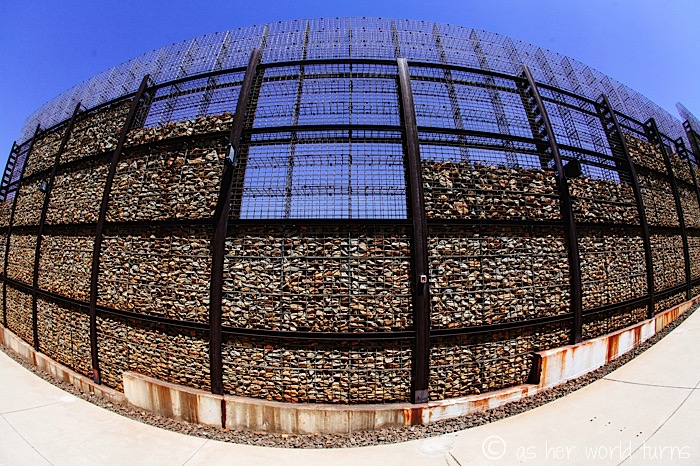
There are cut-outs of Johannesburg residents walking up the ramp — visitors from around the world join their ranks in marching away from segregation and towards a better world.


I spot people moving these colored sticks in the photo below and do not understand the significance at first:

Only later do I come across a plaque explaining the meaning of these sticks:
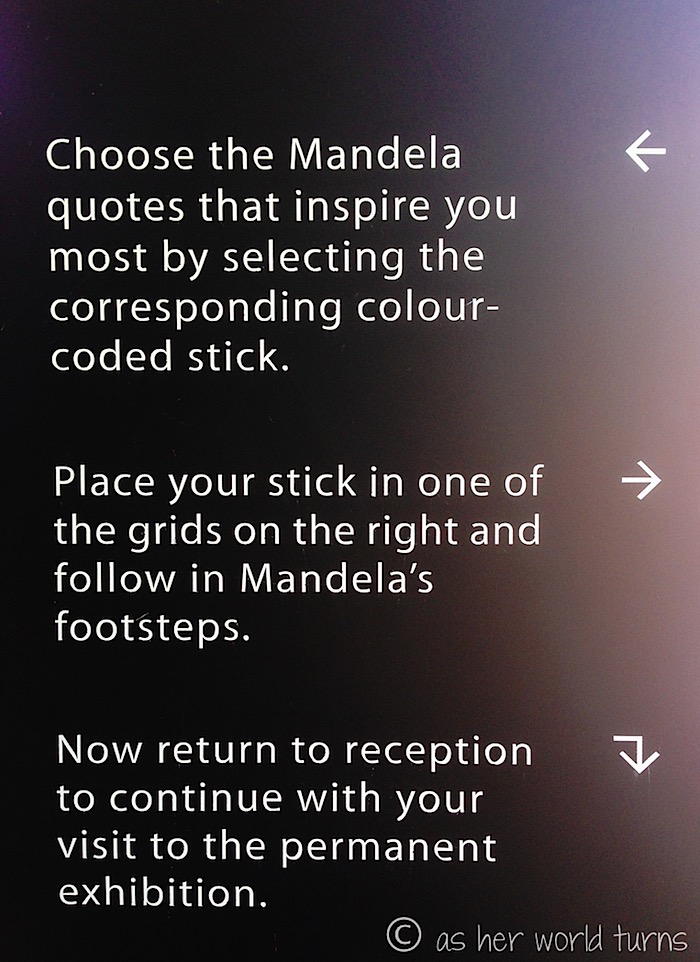
At this point I divert course to the museum’s cafe for a quick lunch (it’s like 2pm at this point). A burger, iced tea, and latte — it hits the spot.
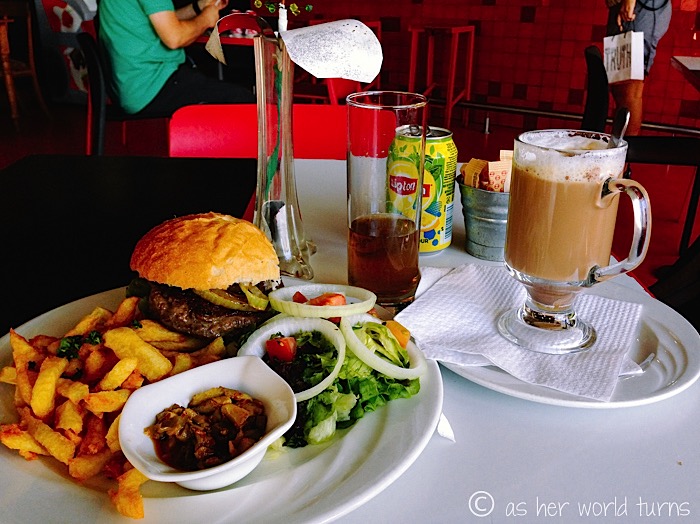
With utmost respect for the importance of the museum and all that it represents, its list of rules makes me chuckle:

I don’t spot this list of rules until I’m well inside the museum, so it’s a good thing I had no plans for swimming / diving or open fires… or right about now I’d be pretty disappointed.
By and large I abide by the museum’s rules and refrain from taking photos inside the museum. But I can’t help but snap a few. These next few photos were taken inside the heart of the museum.
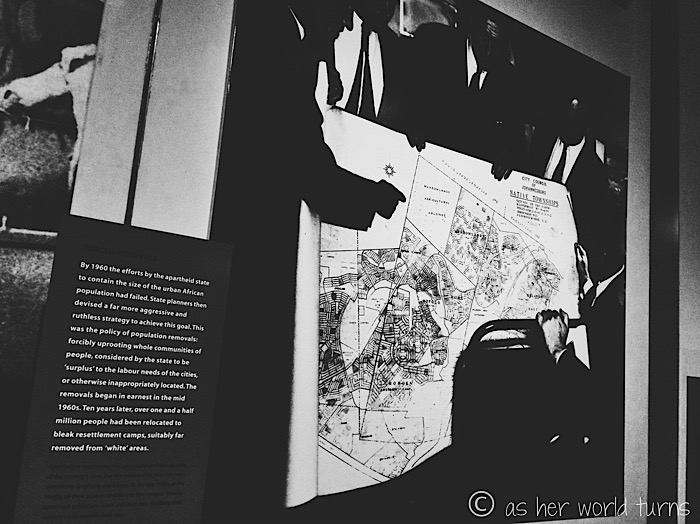
Mandela’s full name is Nelson Rolihlahla Mandela, but he was also called Dalibhunga and Madiba at various times in his life. This photo explains the meaning of each part of his name:
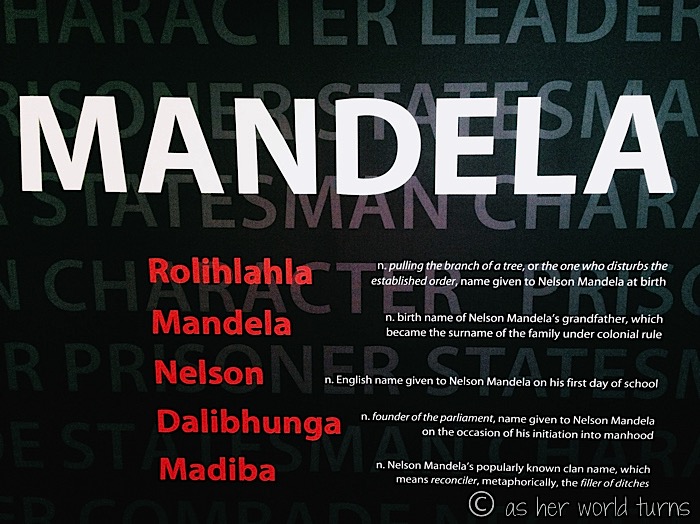
A fascinating aspect of apartheid is that it was an invisible force in South Africa. As the signage below states, there was no physical barrier separating black and white zones.
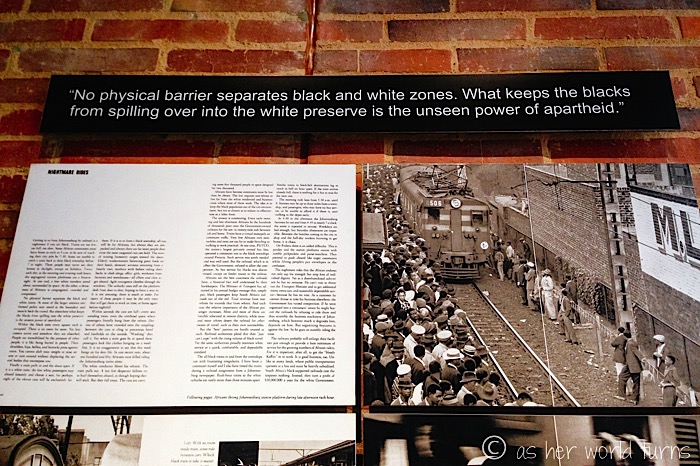
The quote below reminds me of the movie Invictus — admittedly not a favorite of mine, though I can’t help but think of it while in this museum. The film takes place just after the fall of apartheid as Mandela (played by Morgan Freeman) sets about rebuilding South Africa, using sports and in particular a rugby player (Matt Damon) to unify the country.
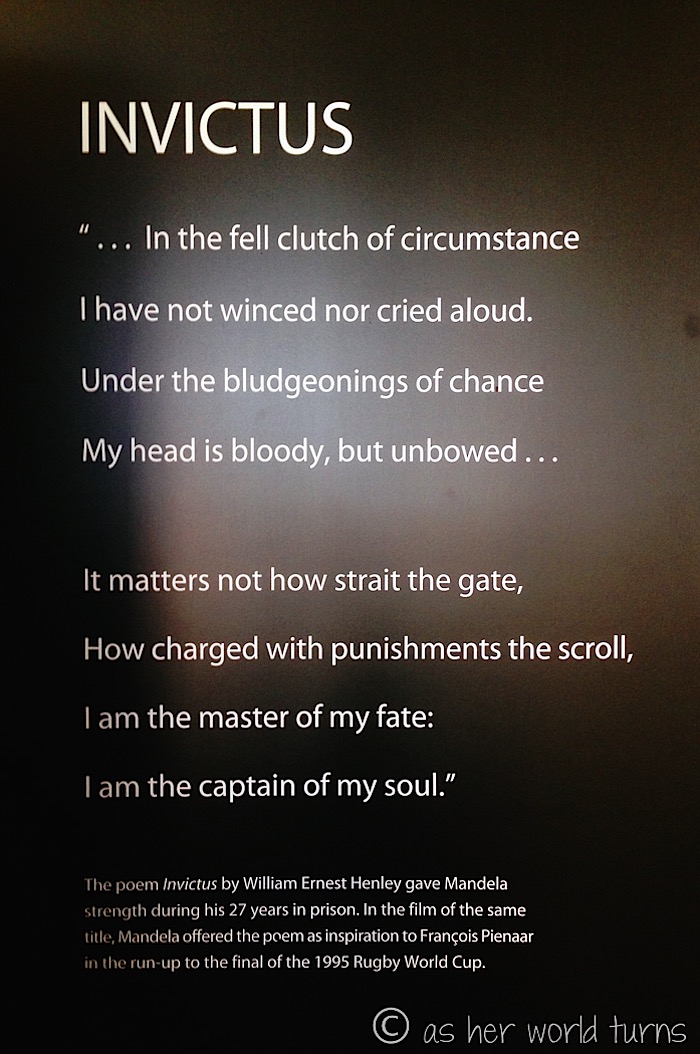
These next two photos were taken near the museum’s exit. Visitors are invited to take a stone from the left and place it on the growing pile of stones on the right as a commitment to fighting against racism and discrimination.

The core values of the South African constitution (which also are represented in the seven pillars outside the museum) are spelled out on the walls of this space: equality, responsibility, democracy, diversity, respect, reconciliation, and freedom.
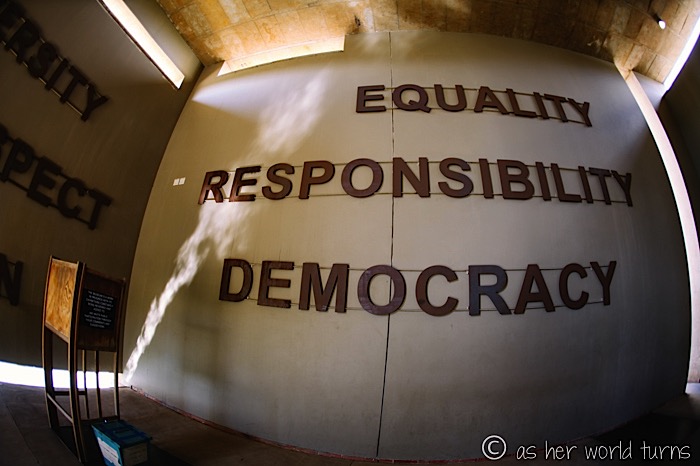
Randomly I run into two friends from our Namibia overland tour inside the museum — what are the odds?! Maurice and Janine are a couple from Germany traveling around the world. The last time I saw them was on our first day in Cape Town six weeks earlier.

But this isn’t the only surprise of the day. While at my Johannesburg hostel near the airport, I opt to save a few bucks by staying in a dorm bed instead of booking a private room because the manager tells me no one else has booked the dorm. So imagine my surprise when the door opens around midnight and a newly arrived traveler enters… and it’s my friend Mike, who I last saw in Ethiopia four months earlier. We are friends on Facebook but hadn’t pieced together that the other person was in Johannesburg. Can you imagine the odds of that happening?! I almost didn’t recognize him at first because his hair had gotten so long. We spent awhile catching up on travel — we’d each visited some of the same places over the prior months so it was fun to talk shop and compare stories about trekking with gorillas in Uganda or exploring Zanzibar.
These unanticipated meet ups with friends — two times in 24 hours! — happen to me too often to be a coincidence, both while traveling and during my daily life in the States. I take it as a sign that I’m on the right path each time it happens.
I’ll be back Monday to detail the rest of my hop-on, hop-off bus tour of Johannesburg… and then my South Africa posts will be nearly complete. Amen, as I’ve been covering this country for months now! Thanks for sticking with me.

